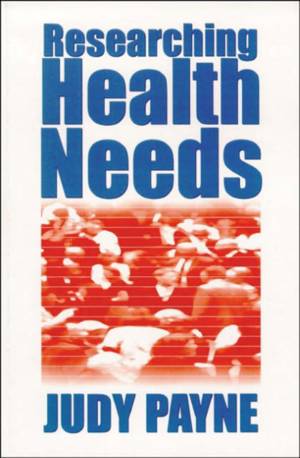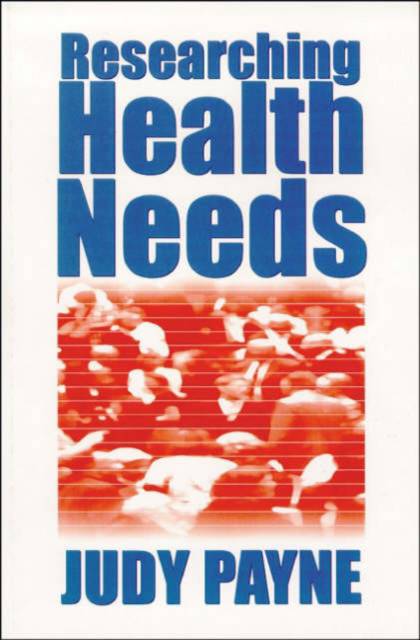
- Afhalen na 1 uur in een winkel met voorraad
- Gratis thuislevering in België vanaf € 30
- Ruim aanbod met 7 miljoen producten
- Afhalen na 1 uur in een winkel met voorraad
- Gratis thuislevering in België vanaf € 30
- Ruim aanbod met 7 miljoen producten
Zoeken
€ 380,45
+ 760 punten
Uitvoering
Omschrijving
Researching Health Needs provides a practical, easy to use introductory guide to the main social science research techniques used in gathering evidence about the health needs of local communities. Assessing health needs is part of the evidence-based approach to planning that is now central to practice in health professions, such as community nursing, social care, community work and public health.The book guides the reader through the process of producing evidence about health needs, from the initial planning stages of research to writing up, getting the message across, and trying to influence policy and practice. All of the methods are described in a simple and, as far as possible, non-technical way, and are extensively illustrated by concrete examples from exisiting studies.This practical guide to assessing health needs provides a comprehensive, and at times imaginative, approach to applied social research. Key features of the text include: coverage of both social survey methods and qualitative approaches; a review of methods for investigating health status and community profiling, along with longitudinal and evaluative studies; a section on using the internet to access information, with details of relevant international and UK websites; inclusion of visual techniques for collecting data, along with guidelines for incorporating these into mixed-methods studies; extensive use of case studies; and practical exercises at the end of each methods chapter.This accessible and practical introduction to applied social research will be an essential text for undergraduate and post-qualification students in health, community work, and social care. It will also be an invaluable tool for practicing professionals in these fields.
Specificaties
Betrokkenen
- Auteur(s):
- Uitgeverij:
Inhoud
- Aantal bladzijden:
- 208
- Taal:
- Engels
Eigenschappen
- Productcode (EAN):
- 9780761960836
- Verschijningsdatum:
- 1/12/1999
- Uitvoering:
- Hardcover
- Formaat:
- Genaaid
- Afmetingen:
- 156 mm x 239 mm
- Gewicht:
- 485 g

Alleen bij Standaard Boekhandel
+ 760 punten op je klantenkaart van Standaard Boekhandel
Beoordelingen
We publiceren alleen reviews die voldoen aan de voorwaarden voor reviews. Bekijk onze voorwaarden voor reviews.











